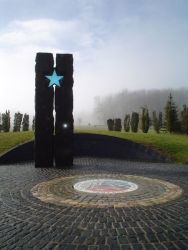Wolfe's Pond Park
Glaciers in New York City - Wolfe's Pond Park
The landscape of Wolfe’s Pond Park on Raritan Bay is rich in history, both natural and human. The land beneath the park was carved during the last ice age, the Pleistocene Epoch, which began around 1.5 million years ago. When the Earth’s climate began its dramatic cooling, huge masses of snow and ice formed in the arctic, sometimes two miles in thickness. The tremendous weight and pressure of the ice sheet caused the underlying snow to solidify, providing a surface on which glaciers could travel. During the Pleistocene Epoch, there were four glacial advances, the most recent being the Wisconsin ice sheet, which had the greatest impact on the land beneath New York City.
The Wisconsin ice sheet began its southward journey from the Arctic around 100,000 years ago, reaching what is now New York roughly 50,000 years later. By this time, it had lost some of its bulk, although it was still 300 feet thick and stretched from Massachusetts to Montana. As the glacier moved through this region, it deepened the bed of the Hudson River, carved out such geologic features as the Great Lakes and the Finger Lakes basins, and left its mark on the Adirondack mountains. The glacier also deposited tons of gravel and pebbles, moving boulders from the Palisades to Central Park, plowing up topsoil, and leveling the earth, filling in depressed areas with glacial till.
The melting ice of the glacier transported enormous amounts of clay, sand, and gravel south and deposited them along the shores of Staten Island, forming the beach at Wolfe’s Pond Park, among other geographic features. The freshwater Wolfe’s Pond was once a tidal inlet, but the gradual action of wind and waves pushed sand and clay into the mouth of the inlet, damming it and forming a pond. It is connected by a stream to Acme Pond, which was formed as the Wisconsin ice sheet retreated, leaving a large chunk of ice behind. As the chunk melted, it made a permanent depression, or kettle pond, filled with water. The ponds, along with the other characteristic terrain of the park, was formed during the 100,000 year journey of the Wisconsin glacier.
Check out your park's Vital Signs
Clean & Safe
Green & Resilient
Empowered & Engaged Users
Share your feedback or learn more about how this park is part of a
Vital Park System










